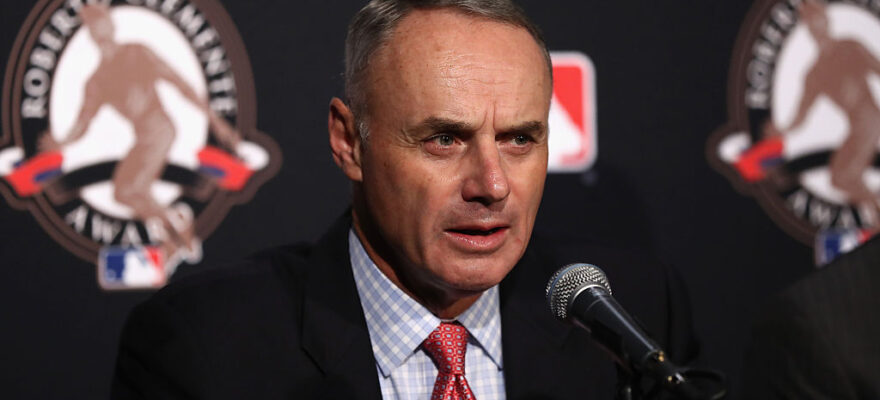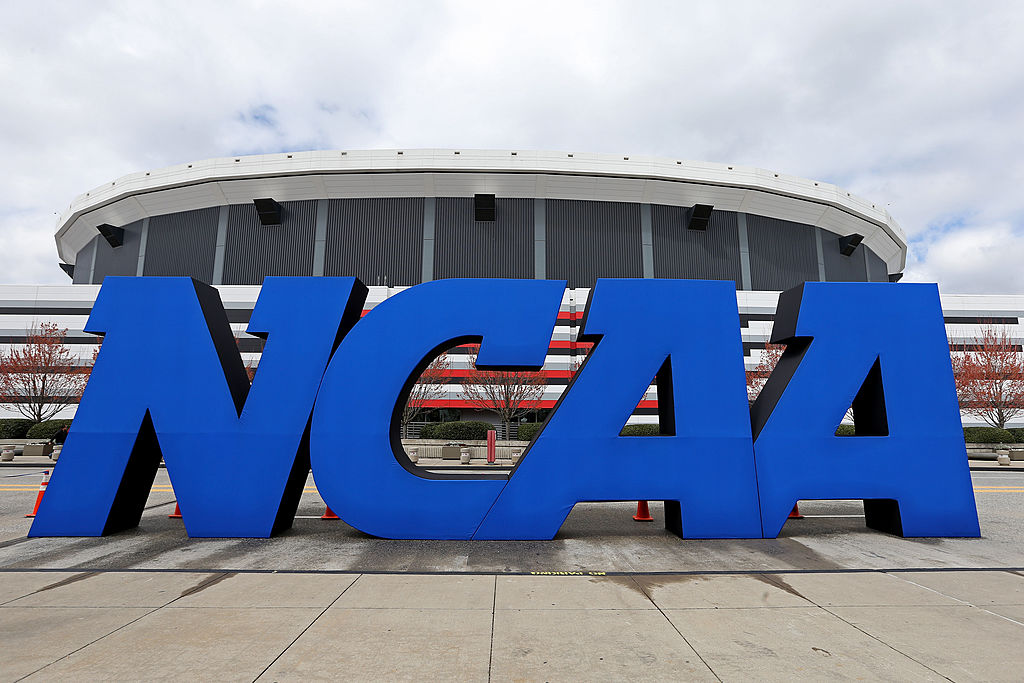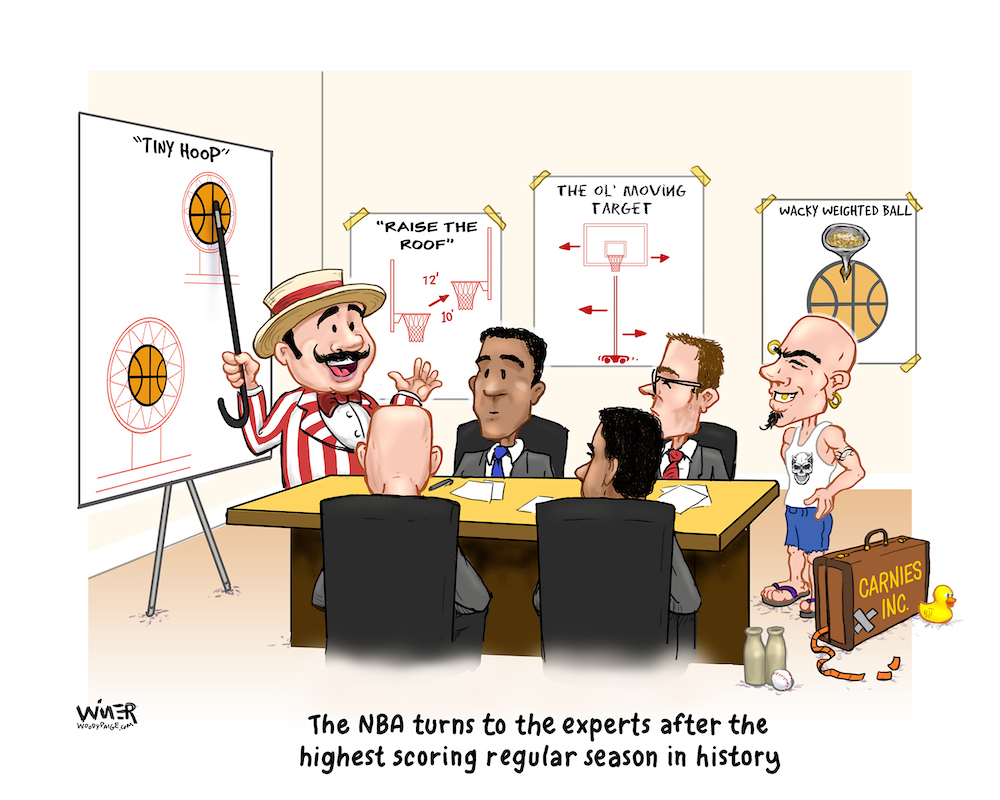When Rob Manfred took over as Commissioner of Major League Baseball, he quickly established himself as something of a mad scientist-type.
A game long steeped in tradition, doing things a very specific way, and with a known tendency to loathe changes, big or small, had put in charge a man who completely ignored the old “if it aint broke, don’t fix it” thing.
Because people were telling him baseball’s pace of play was too slow, and thus the game was dipping in popularity, Manfred decided to look for ways – some small, some bigger – to “improve” baseball. All while industry revenues continued to reach all-time highs.
Some of the ideas he put forth were downright…stupid. Like shrinking the strike zone to try to cut down on strikeouts. Such a bonehead move would have of course slowed the pace of the game with all the additional bases on balls that would have resulted. Even long time fans would have been turned off.
Other terrible ideas have gotten more consideration. Like allowing a batter to “steal first base” when a pitched ball gets past the catcher, regardless of the count. That rule – maybe the dumbest thing ever considered – actually got a trial run in an independent professional league. Hopefully we’ve heard the last of it.
Of course, some less awful ideas still have a pulse, and a few were even used in games during this abbreviated 2020 season. Like the “California tie-breaker” that placed a runner on second base to start every inning during extra innings. The “three batter minimum” rule which forced relief pitchers to pitch to at least three hitters when they entered the game – rather than having a reliever come in to face one specific hitter, which happened frequently) was used to mixed reviews this season, and making doubleheader games seven innings instead of nine? That’s already SOP in the minor leagues, so it wasn’t a huge adjustment for the players.
Things like allowing pitchers to keep a wet rag in their pockets to be able to improve their grip (a COVID 19 safety procedure) along with no high fives and no spitting (both of which went out the window early in the season…) were designed to be one-year things. That’s over now.
This year MLB also expanded the postseason, welcoming in eight teams from both leagues for 2020. That allowed two teams with losing records to qualify – and the 29-31 Houston Astros almost made the World Series again.
Of course, the Granddaddy of all bad rule changes – the Designated Hitter (born in 1972) – was used throughout all of baseball in 2020.
So, which changes will – and should – survive examination this offseason and become a permanent part of the game?
Let’s start with a NO vote on the California tie breaker. It didn’t make much of a difference in the length of games, so it’s probably – hopefully – one and done. If any of Manfred’s rule change proposals – at least the ones that have seen the light of day – scream out “slow pitch softball” more than the California tie-breaker, you’d be hard pressed to name it. Rule changes that speed up the game are one thing, but rule changes that can dramatically alter the outcome are entirely another. Using that tie breaker rule at the big league level is almost as stupid as stealing first base. Almost. Let’s hope it finds the same dumpster to die in.
Same with the seven inning doubleheader games. The cost is far greater than the benefit. It can change outcomes unfairly. One and done.
And MLB should be able to find a way to expand the postseason without allowing more than half the league – including teams with losing records – to get in. This will probably be something that’s closely examined and fixed before next March, in no small part to the need for the additional revenue to offset this season’s huge financial losses.
Don’t expect eight teams from both leagues in next season, but don’t expect to go back to five, either.
There’s no reason to believe that the DH will go back to being just an American League thing anymore. There’s no putting that toothpaste back in the tube. The owners and players union both want it to be permanent in both leagues, and after 2021 it’s expected to be adopted as part of the next collective bargaining agreement. Having National League pitchers hit again for a single season seems sort of pointless. So, it’s very likely the DH is here to stay in both leagues.
That’s one that will stick.
The other is forcing all relief pitchers to face a minimum of three batters (or finish an inning.) It’s not all that popular with coaches and managers, but fans seem to dislike constant pitching changes more than they like in-game strategy, so it would be a surprise if the mad scientist didn’t get his way on this one. This rule looks like it’s going to be around for a while – at least until Manfred finds a better way to hurry things along.
If we’ve learned anything this year, it’s that Manfred is unlikely to stop tinkering. We know that some form of electronic strike zone is coming, we just don’t know when. Ironically, when home plate umpires have access to the same technology and the same views that we have at home, more strikes will get called and the game will actually speed up.
Imagine that.
Listen to Mark Knudson on Monday’s at 12:30 with Brady Hull on AM 1310 KFKA and on Saturday mornings on “Klahr and Kompany” on AM 1600 ESPN Denver.
More from The Woody Paige Sports Network:
- Woody Paige: That time I played blackjack with Michael Jordan in Monte Carlo
- ‘Most losses in 2020’ prop bet offers NFL bettors huge value
- It’s time for the NFL to go to a limited bubble approach
- In new world, there’s nothing wrong with knowing point spreads and rewarding your backers
- Ignore the Polls – ranking college football teams this season is pointless
- Woody Paige: Broncos need Drew Lock to prove he’s THE guy



















